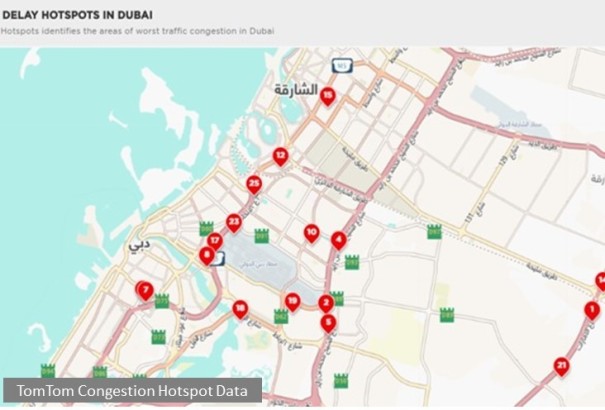
Have you ever sat down and imagined the capabilities and limitations of big data – a term we give to drawing insights by applying analytics to the ever-growing amounts of digital information? Sometimes, it seems tempting to think that big data can do anything.
With big data, you can tell what is likely to happen; you can find unexpected relationships as well as monitor situations as they develop. Moreover, big data can be used to fix a problem before it becomes a crisis. We are going to look at managing traffic menace using big data, but first, let us briefly look at the term ‘smart city.’
What are Smart Cities?
A smart city is an umbrella of terms used to describe the act of designing a city or an urban development that is more agile and sustainable to support life – in areas cutting across roads, traffic control, sewerage systems, security, health and all other aspects of technology.
Big data is advancing the concept of smart cities. Cities are getting smarter to fetch more helpful responses through big data analytics to ensure there is ample space for the city to be connected to a standard network.
How Big Data and Internet of Things (IoT) are Being used in Traffic Management
Everyone hates jams – from city dwellers, planners and commuters the world over, congestion is a big menace. The integration of big data and Internet of things cloud platform, with a network of interconnected cars and sensors, means that traffic management is getting smarter and more efficient.
The concept of big data and IoT means that the quantity of traffic which should be allowed to roll out at a particular time can be regulated. Information can be collected in real time with the use of sensors, cameras, wearable gadgets and smart devices. With the rapid surge of connected vehicles, agencies and startups are using data analytics and mobile networks to help cities manage traffic more efficiently.
Let us look at example on how urban transportation planners are using big data to address traffic challenges;
Smart Traffic Decision Support
The smart-traffic decision support system is born under the institution of big data analytics. It breaks down information into chunks and helps to share this information across multiple systems and departments. The solution collects all forms of traffic information using sensors to facilitate real-time traffic monitoring and control. Additionally, the solutions feature the ability to predict traffic trends based on realistic simulations and mathematical model. The aim of all this system is to assist decision-makers via reliable and scientific information.
Parking Issues and Traffic Congestion
According to WHO, 50 percent of the world’s population live in cities, and this population is growing by almost 2 percent every year on average. While population surge is good for the economic health of a city, this increase often strains transportation systems.
Data Analytics is in use to help city planners identify the causes of congestion. Planners can now look at the origins, and the ultimate end points of empirically measured, real-world trips and make a determination of whether insufficient parking is the problem or not. City planners can use data analytics to find out the parking slots mostly preferred by drivers.
Long Commutes
The US Census data shows that the average American worker today spends 20 percent more time commuting that they used to do in the 1980s. It is a positive move for cities to attract more people and business. However, scaling up road capacity to keep up with additional traffic is never easy.
Big data and IoT can be used to fix long commutes by figuring out the length of commutes, where the commutes begin and ultimately end, and who is doing them. Planners are then able to access if those commuters have unlimited access to practical driving alternatives. Analytics can also show the location of the largest first and last miles, together with the gaps. This data helps in identifying alternative routes that can encourage drivers to use alternatives.
Traffic has a significant impact on the livability and efficiency in cities. Efficient use of data and sensors will help to manage traffic efficiently, regardless of the population surge. Smart traffic management aims at making urban driving more seamless and efficient. As smart cities evolve, services and infrastructure will be more integrated. As time moves by, issues such as traffic, waste management and energy conservation will greatly benefit from the concept of Internet of Things and Big Data.
source: http://bigdata-madesimple.com/iot-big-data-driving-smart-traffic-management-smart-cities/









